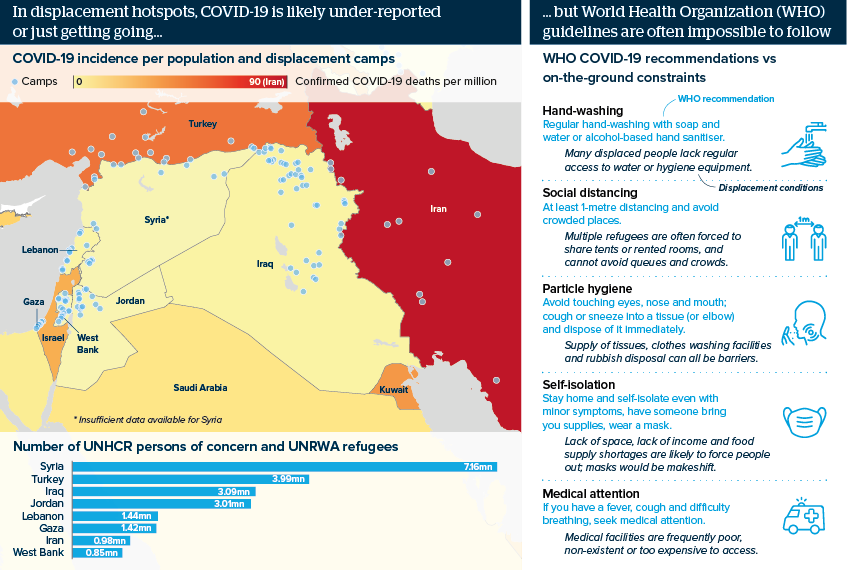Middle East displacement is a looming COVID-19 threat
Years of conflict have left a large and acutely vulnerable refugee population, across scores of camps and crowded cities
Source: Sources: WHO, UNHCR, UNRWA, Our World In Data
Outlook
For up to 25 million people in the Middle East, the COVID-19 threat is compounded by the legacy of displacement. This deepens vulnerability, through poor medical facilities and health; lack of education or reliable information; inadequate water and sanitation; and, especially, inability to implement social distancing.
Even displaced people living outside camps are often in cramped conditions. Aid distribution itself can be a source of infection. Those relying on paid work are unlikely to have sick leave.
Although regional camps have not yet seen a major outbreak, it could be devastating. Rising cases in Yemen undermine theories that climate or demographics might protect the region’s poorest.
Impacts
- If overcrowded displaced communities become a reservoir of infection, they will likely face new prejudice and restrictions.
- Nationally imposed lockdowns are undermining refugees’ livelihoods, as many are prevented from travelling to work or jobs disappear.
- Aid provision will contract as global needs rise due to the pandemic, charities’ incomes fall short and governments cut spending.
- Systems to distribute food or compensate for losses, for instance in Lebanon, will often exclude non-citizens.
See also
- Lebanese Palestinian jobs move may have limited impact - Dec 9, 2021
- Aid to the Middle East will fall far short of needs - Jul 31, 2020
- Long-term refugee problems may mould the Middle East - Dec 19, 2019
- More graphic analysis
